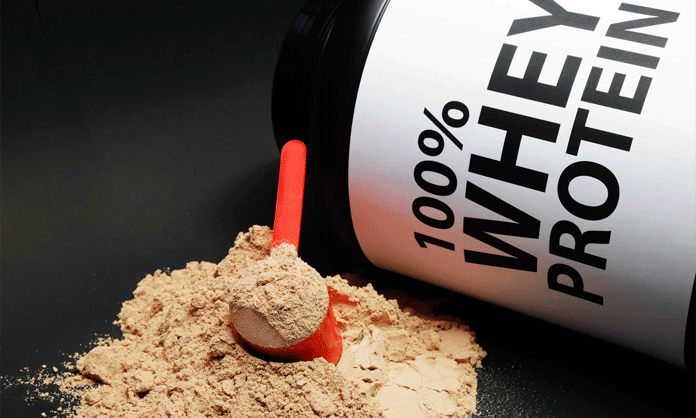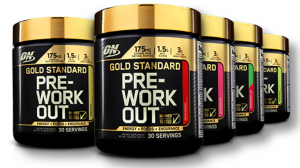Table of Contents
One of the two proteins contained in cow’s milk is whey protein. The curding process separates the curds from the liquid, commonly known as whey when milk is used to make cheese. Whey is a nutrient-dense, almost translucent liquid that contains all nine essential amino acids (protein’s building blocks) as well as vitamins and minerals. Whey protein powder is made by filtering and drying liquid whey. Whey protein powder can be used for smoothies, shakes, protein bars, meal replacements, and more as a nutritional supplement.
Top 5 Benefits of Whey Protein
Whey protein is a fantastic source of high-quality protein.
It’s a high-quality protein that’s complete and contains all of the important amino acids. Furthermore, as compared to other types of protein, it is highly digested and swiftly absorbed from the intestine. These characteristics make it one of the best protein-rich foods accessible. it is a popular nutritional supplement among bodybuilders, athletes, and others who need more protein in their diet.
Muscle growth is aided by whey protein
With age, muscle mass naturally decreases. This frequently results in weight gain and increases the chance of developing a variety of chronic conditions. With a combination of strength exercise and a proper diet, this negative change in the body can be partially slowed, reversed, or stopped. Strength training combined with a high-protein diet or supplementation has been demonstrated to be an effective preventive strategy. High-quality protein sources, such as whey, are particularly beneficial. Whey is high in leucine, a branched-chain amino acid. Leucine is the amino acid that promotes the highest growth (anabolism). As a result, it is beneficial for preventing age-related muscle loss as well as increasing strength.
Whey protein has the potential to reduce blood pressure
One of the primary risk factors for heart disease is abnormally high blood pressure (hypertension). Dairy consumption has been associated with lower blood pressure in numerous studies. Angiotensin-converting enzyme inhibitors are thought to be responsible for this impact. Lactokinins are ACE inhibitors found in whey proteins. Several animal studies have shown that they can help lower blood pressure. Whey protein supplementation of 54 grams per day for 12 weeks can reduce systolic blood pressure by 4% in overweight people, according to one study. Another study demonstrated substantial improvements after individuals were given 22 g of whey protein concentrate per day for 6 weeks.
Whey protein for type 2 diabetes
Type 2 diabetes is a chronic condition marked by elevated blood sugar levels and insulin dysfunction. Insulin is a hormone that stimulates the uptake of blood sugar into cells, allowing it to remain within healthy limits. Whey protein has been shown to help control blood sugar levels. When compared to other protein sources like egg white or fish, it appears to be the winner. Whey protein’s qualities may be analogous to those of diabetes medicines such as a sulfonylurea. As a result, whey protein can be utilized as an additional treatment for type 2 diabetes.
Whey protein may aid in the reduction of inflammation
Inflammation is the body’s reaction to injury. Inflammation can be useful in the short term, but it can also become chronic under certain circumstances. Chronic inflammation is a risk factor for many diseases. It could be a sign of underlying health issues or unhealthy lifestyle behaviors. A major review study discovered that high dosages of whey protein supplements (more than or equal to 20 grams per day) significantly lowered C-reactive protein (CRP), a critical marker of inflammation in the body.
Side Effects of Whey Protein
When taking significant amounts of whey protein, some people may have unpleasant side effects such as headaches, nausea, and cramps. When people who are allergic or intolerant to milk protein consume whey protein, a milk-derived substance, they may have negative side effects.
What Are the Different Types of Whey Protein?
Simply defined, whey protein concentrate (WPC) has a larger fat and carbohydrate content than whey protein isolate (WPI). The percentage of protein in WPC can range from 30 to 80 percent. Whey protein isolate (WPI), on the other hand, is filtered to remove additional fat and carbohydrate, leaving a protein concentration of at least 90%. It is also more expensive than WPC due to the additional processing required.
Hydrolyzed whey is also known as whey protein hydrolysate (WPH). It is a pre-digested or broken-down type of whey protein that allows for better absorption. This type of protein is the easiest to digest of the three varieties of whey protein. It’s also found in a variety of newborn formulae and therapeutic protein supplements.
The most prevalent types of whey protein in the market are concentrate and isolate. According to Reports and Data, the global whey protein market size was valued at USD 9,552.5 Million in 2020 and is expected to reach USD 19.75 Billion by 2028, registering a CAGR of 9.4%. However, the choice is essentially determined by budget, demands, and objectives. Consider the case of lactose intolerance. In such a scenario, whey protein isolate may be preferable because the filtration process removes more lactose, a type of sugar (also a carbohydrate) found in milk and dairy products.
You May Also Like: Difference Between Mass Gainer and Whey Protein
What to Look for When Buying Whey Protein Powder
Aside from selecting the right sort of whey protein, the contents of the product are also important to consider.
Check the list of components
Whey protein powder in its original state might not be to everyone’s liking. To improve the taste, manufacturers may add sugar and flavorings. As a result, it is better to look for a protein powder that simply contains whey protein or one that is low in added sugars, sweeteners, additives, and fillers.
Select a product that has been thoroughly tested by a third party
Dietary supplements, such as whey protein, are not currently regulated by the FDA in the same way that food is. Under federal law, a producer can make claims about a product before distributing it to the general public without obtaining FDA approval.
Therefore, a protein powder that has been approved and certified by a third-party organization, such as the NSF or Informed Choice, is preferable. By looking for the seal of approval, one can be sure that the product has been thoroughly tested, studied, and validated by a third-party agency. The verification specifically examines the product’s constituents, such as the amount of protein present and the presence of heavy metals like lead and arsenic.
Bottom Line
Protein powders, on the other hand, maybe incorporated into your lifestyle for a variety of reasons. Protein powders may be used by some people to increase their endurance and strength while building and maintaining muscle mass. Others may supplement their diet with protein powder if they aren’t getting enough protein from other sources. Some people may use it because it’s easier to take protein powder mixed with food and beverages to achieve their nutritional needs if they have swallowing or chewing challenges.
Your dietary needs and goals will determine whether or not you require the additional protein. However, before making a purchase, consulting a qualified nutritionist to establish protein requirements is necessary.









Great article about whey protein and it’s benefits. Protein is important for a healthy lifestyle, not just for building mass, as you mentioned.